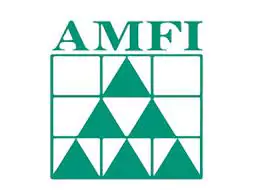
Life insurance is a financial product that provides a payout, known as a death benefit, to the beneficiaries named in the policy upon the death of the insured person. This payout is typically a tax-free lump sum and is designed to provide financial support and security to the policyholder's loved ones in the event of their death. Life insurance serves several key purposes:
- Income Replacement: Life insurance can replace the income of the insured person, ensuring that their dependents have financial support even after their death. This is particularly important for breadwinners in a family.
- Debt and Expenses: It can be used to pay off outstanding debts, such as mortgages, loans or credit card balances, as well as cover immediate and ongoing living expenses, such as rent or utilities.
- Estate Planning: Life insurance can be a valuable tool for estate planning helping to provide liquidity to pay estate taxes or other obligations.
- Education Funding: Parents often use life insurance to fund their children's education if they pass away prematurely.
- Business Continuation: Business owners may use life insurance to ensure that their business can continue to operate and provide for their family or business partners after their death.
There are several types of life insurance policies available in India. Those are:
- Term Life Insurance: Term insurance is a pure protection plan and is not market-linked. Moreover, the premiums for term insurance are lower as compared to any other life insurance product. The premiums are also more affordable if you buy them early in life. Experts often suggest that term plan should be a priority for you as soon as you start earning. This type of policy provides coverage for a specified term, such as 10, 20, or 30 years. Some term plans also give you the option to add riders, like critical illness coverage (providing a lump sum for the treatment of specified critical ailments) and accidental death benefit (paid over and above the sum assured in the unfortunate event of death due to an accident). These riders can provide you and your family with an extra layer of protection at a nominal increase in the premium.
- ULIPs – Unit Linked Insurance Plans : A unit linked insurance plan (ULIP) is a combination of insurance and investment. A ULIP provides life cover that offers financial protection for your loved ones. In addition to this, it also gives you the potential to create wealth through market-linked returns from systematic investments.
A ULIP offers you the opportunity to invest your money in different fund options, depending on your risk appetite. ULIPs come with a 5-year lock-in period, and the money can be invested in bonds, equities, hybrid funds, etc. If you are looking for safer options, bonds can be a good choice. On the other hand, if you are open to more risk, hybrid funds and equities have the potential to offer better returns. Since each individual is different, ULIPs allow great flexibility for investment. Your risk appetite and investment preferences are likely to change with age. ULIPs permit you to take these factors into consideration and alter your investment strategy accordingly. - Endowment Insurance Plans: Endowment plans are ideal for people who want guaranteed returns along with the protection of life insurance. An endowment plan is a life insurance policy that provides life coverage along with an opportunity to save regularly. This enables you to receive a lump sum amount on the maturity of the policy. In case of death during the policy term, your nominee(s) also receives a death benefit.
Just like ULIPs, endowment plans are quite flexible too. You can choose a suitable method and time frame to pay the premium. Endowment plans also give you a chance to benefit from bonuses, that are paid additionally over and above the sum assured of your policy. - Money Back Insurance Plans: A money back plan is a life insurance policy where the insured person gets a percentage of sum assured at steady intervals. Since you save regularly, the money back plan rewards you regularly. In simple words, a money back plan is an endowment plan with the benefit of increased liquidity with systematic payouts. Money back plans are designed to help you meet your short-term financial goals. The money back feature can add to your monthly or yearly income.
- Whole Life Insurance: As a life insurance policyholder, you get the benefits depending on the types of life insurance policies you have chosen. What distinguishes a whole life insurance plan from other life insurance types is that it provides insurance coverage to the insured for the entire life, up to 100 years of age.
Typically, the death benefit, under a whole life insurance, is payable to the beneficiary in the case of the untimely demise of the policyholder. On the other hand, you are eligible to receive a maturity benefit under a whole life insurance policy if you cross 100 years of age.
Another significant feature of such whole life insurance plans is that some offer the option to pay premium for the first 10-15 years while you get the benefits for the entire life. - Child Insurance: When it comes to life insurance types, a child plan is an investment+insurance plan that helps you meet your child’s financial needs. A child insurance plan will help you create wealth for your child’s future needs like education.
You can start investing in these plans from the birth of your child. You get the flexibility of investing your hard earned money into several funds on the basis of your financial condition and goals in mind. - Retirement Plans : Retirement Plans are amongst the types of life insurance policies that provides financial security and help you with wealth creation after your retirement. With Retirement Plan, you will get a sum of money as pension in the vesting period.
In case of your untimely demise during the policy term, your nominee will get the death benefits. Retirement Plans comes with death benefit as well as vesting benefit providing protection to you and your family members.
When considering life insurance, it's important to assess your financial needs and goals. Factors like your age, health, income, and the needs of your dependents will play a significant role in determining the type and amount of coverage that is appropriate for you. Life insurance should be part of a broader financial plan that takes into account your entire financial situation. Additionally, it's crucial to review and update your life insurance coverage as your circumstances change over time.




